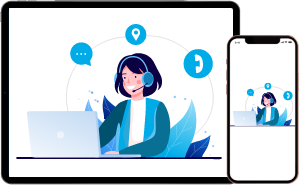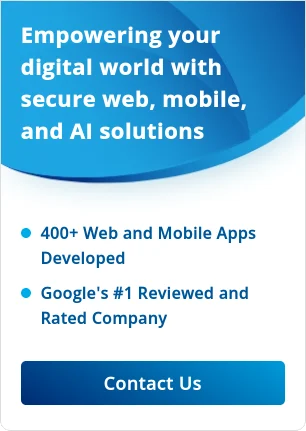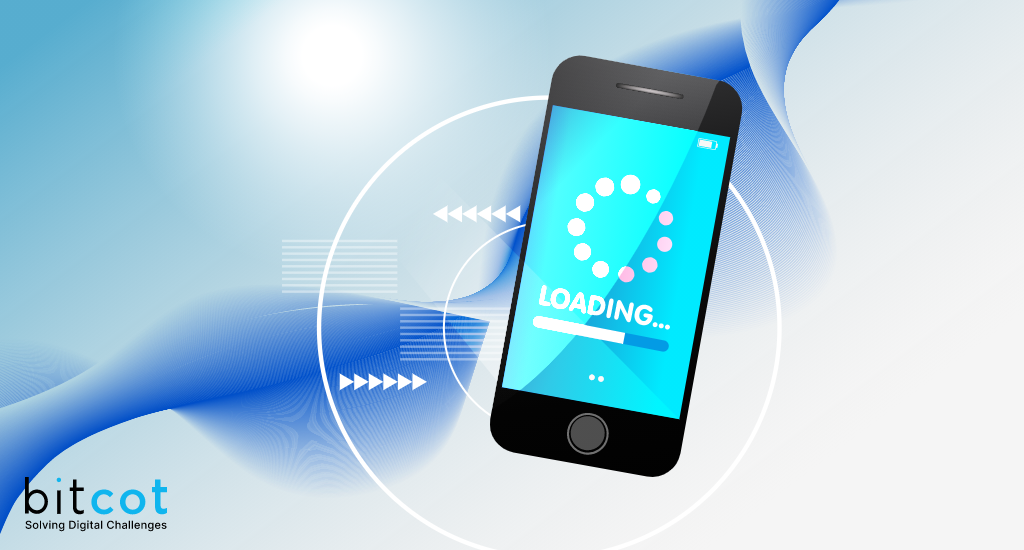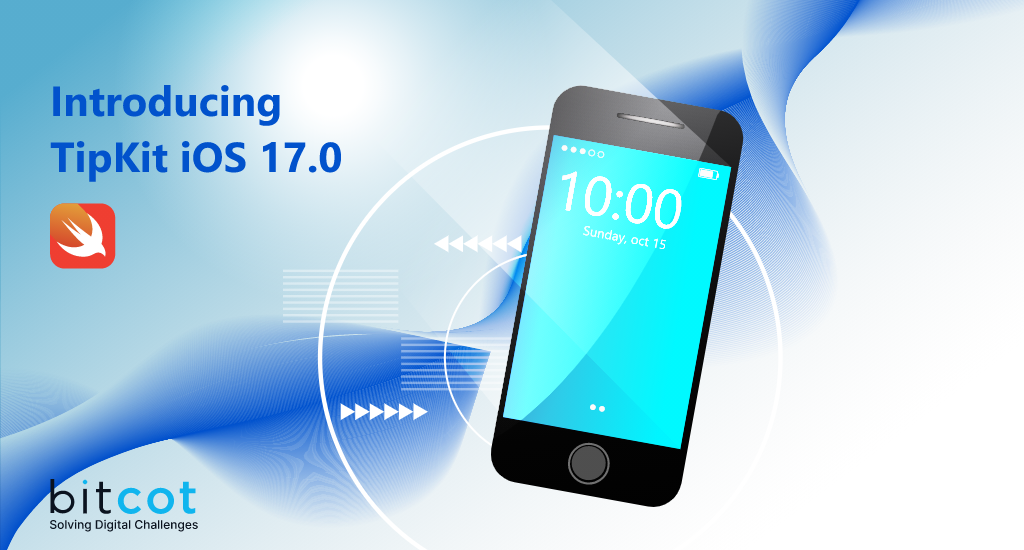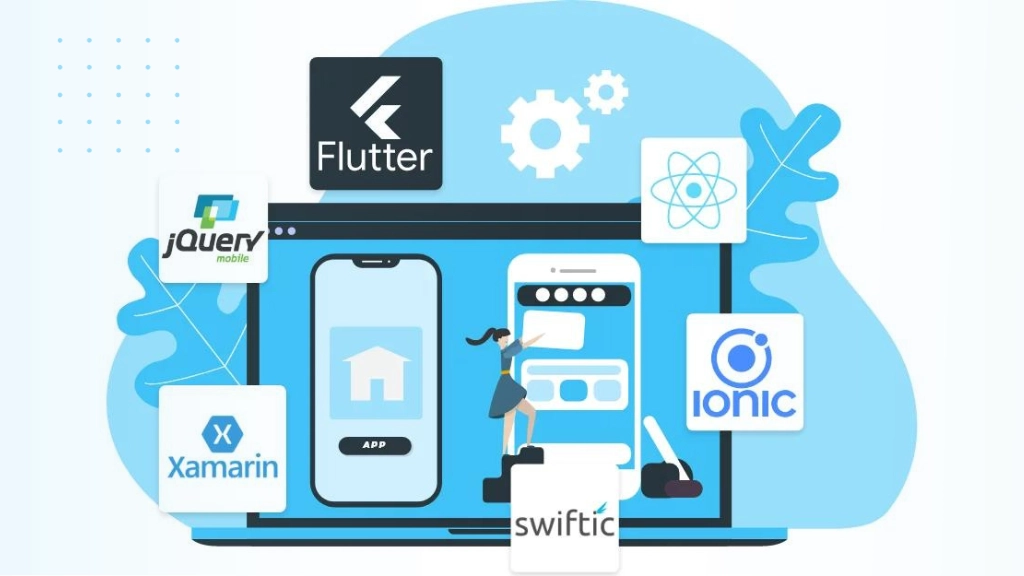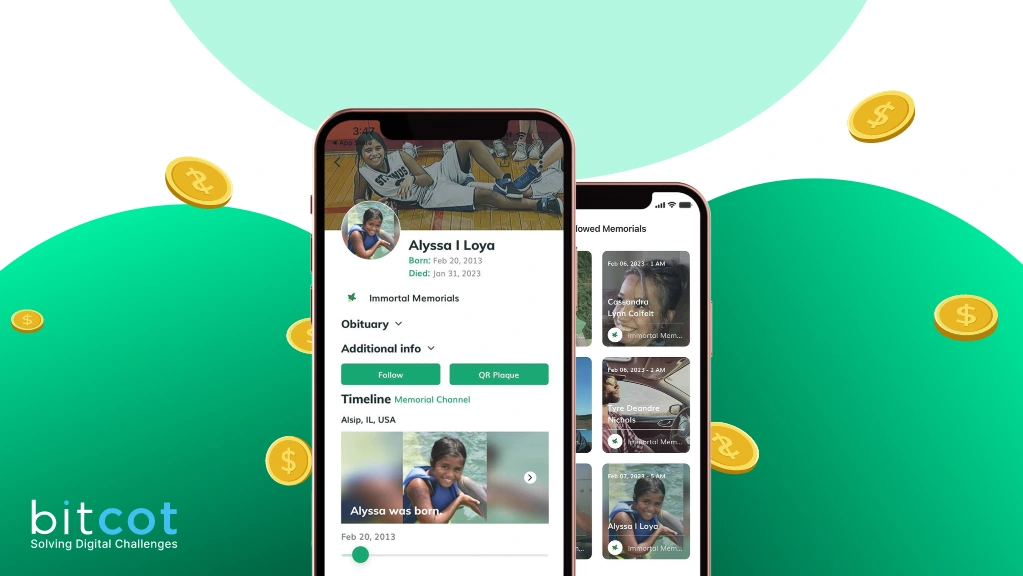
When embarking on an Android app development project, it is crucial to understand the associated costs clearly. App development costs can significantly impact project planning, budgeting, and overall success. By understanding the factors influencing app development cost, businesses and developers can make informed decisions, set realistic expectations, and allocate resources effectively.
The global mobile app market continues its rapid growth, projected to reach $614 billion in revenue by 2026, according to a 9.27% CAGR. Android holds a dominant market share at 75%, with an estimated 2.8 billion active users worldwide, including over 130 million in the United States alone. This undeniable mobile shift makes Android app development an increasingly strategic investment for digital enterprises in 2023 and beyond.
The average cost for an Android app ranges widely from $20,000 on the low end to $100,000 or more for complex apps with advanced capabilities. Key factors impacting the budget include the number of features, custom vs. out-of-the-box functionality, design complexity, backend infrastructure and server costs, testing and quality assurance, development team experience, and geographic location of developers, as well as app maintenance and updates. Each factor plays a vital role in determining the project’s overall cost.
Carefully defining core app requirements and scalability needs is crucial for controlling costs. Additional considerations like maintenance, marketing, and future feature releases also play into the total cost of ownership. With proper planning, however, Android presents a major mobile opportunity at reasonable development costs for savvy businesses.
Effective budgeting is essential for app development projects to ensure financial sustainability and successful project completion. By accurately estimating the costs involved and allocating resources accordingly, businesses can avoid cost overruns, optimize financial resources, and maintain a healthy return on investment (ROI).
Factors Influencing Android App Development Cost
When determining the cost of building an Android app, it is essential to consider several factors that can impact your app development budget. To help you plan effectively, we have outlined key considerations that serve as a checklist for estimating Android app development costs.
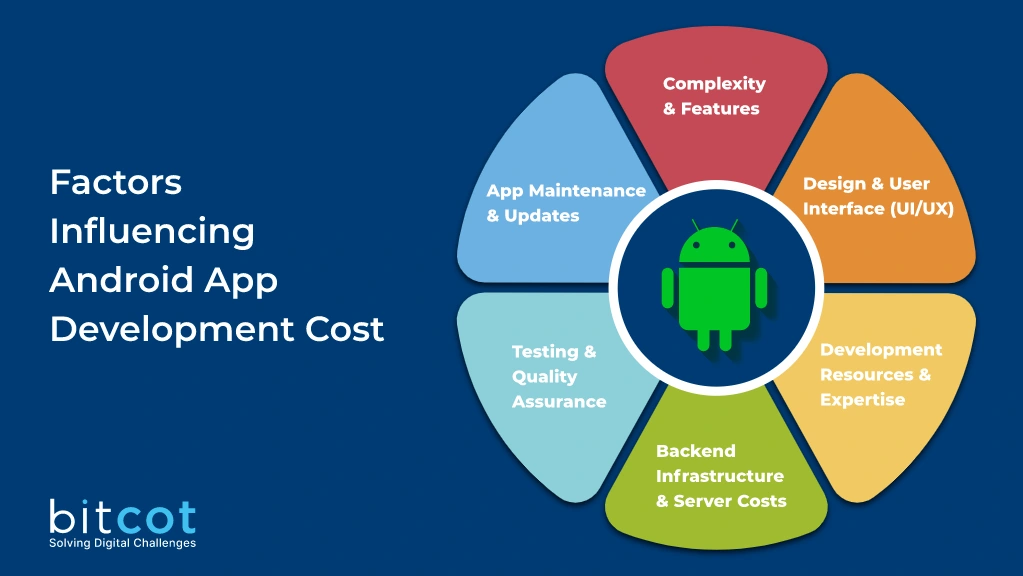
A. Complexity and Features
- Basic, Medium, and Complex App Categories
Android apps can be categorized into basic, medium, and complex based on the complexity of their features and functionalities. Basic apps typically have limited features and straightforward functionality, while complex apps involve intricate features such as user authentication, APIs, third-party integrations, and advanced functionalities. The complexity of the app directly impacts the development cost.
Here is a chart showing a breakdown of Android app development costs based on app complexity:
| App Complexity | Features | Development Cost |
| Simple | Basic UI/UX, limited integrations/functionality, using standard templates and components | $20,000 – $40,000+ |
| Medium | Customized UI/UX, several integrations, moderate custom functionality, some complex components | $40,000 – $70,000+ |
| Highly Complex | Advanced custom UI/UX, extensive integrations, high custom functionality including AI/ML capabilities, complex or new technology components | $70,000 – $150,000+ |
- Impact of features like user authentication, APIs, third-party integrations, etc.
The inclusion of specific features in an app affects the development cost. Features like user authentication, social media integration, payment gateways, real-time messaging, and location-based services require additional development effort and may involve integrating with third-party APIs. Each added feature contributes to the overall cost.
B. Design and User Interface (UI/UX)
- Importance of intuitive and visually appealing design
Design plays a crucial role in user satisfaction and engagement. An intuitive and visually appealing user interface (UI) enhances the user experience (UX) and contributes to the success of the app. Investing in good design can positively impact user adoption and retention rates.
- Custom vs. pre-built design options
Choosing between custom design and pre-built design templates can significantly impact development costs. Custom designs offer more flexibility and uniqueness but often require more time and resources to develop. Pre-built design options can provide a cost-effective alternative but may lack customization options.
C. Development Resources and Expertise
- In-house development team vs. outsourcing
The choice between an in-house development team and outsourcing can have cost implications. In-house teams offer more control and direct communication but may require higher ongoing expenses such as salaries, benefits, and infrastructure. Outsourcing development to external agencies or freelancers can provide cost savings but requires careful vetting to ensure quality and reliability.
- Skill level and experience of developers
The expertise and experience of developers involved in the project influence the cost. Highly skilled and experienced developers may command higher hourly rates but can deliver faster and more efficiently, potentially reducing overall development time and cost.
D. Backend Infrastructure and Server Costs
- Server setup, maintenance, and hosting expenses
Backend infrastructure, including server setup, maintenance, and hosting, incurs additional costs. The choice of hosting provider, server configuration, and required scalability impact the expenses. Cloud-based solutions like Amazon Web Services (AWS) or Google Cloud Platform (GCP) offer flexible and scalable options but involve associated costs.
- Integration with databases and APIs
Integrating the app with databases, third-party APIs, or other backend systems incurs additional development effort and cost. The complexity and number of integrations required contribute to the overall expenses.
E. Testing and Quality Assurance
- Importance of thorough testing to ensure app performance and stability
Thorough testing is crucial to ensure the app’s performance, stability, and security. Testing helps identify and resolve bugs, compatibility issues, and usability problems. Neglecting testing can lead to poor user experience and costly fixes in the future.
- Cost implications of testing processes and tools
The cost of testing depends on factors such as the extent of testing required, the complexity of the app, and the chosen testing processes and tools. Automated testing tools and frameworks may incur additional costs but can improve efficiency and accuracy.
F. App Maintenance and Updates
- Ongoing support, bug fixes, and feature enhancements
App maintenance involves ongoing support, bug fixes, and feature enhancements. Regular updates are necessary to address user feedback, improve performance, and ensure compatibility with new OS versions. The cost of maintenance and updates should be considered as part of the overall app development budget.
- Long-term cost considerations
Long-term cost considerations include ongoing maintenance, server hosting, customer support, and potential future updates. Planning for these costs in advance ensures the app’s sustainability and continued success while minimizing unexpected expenses.
Estimating Android App Development Costs
Developing an Android app can be an exciting and rewarding endeavor, but it’s essential to have a clear understanding of the costs involved. Estimating the cost of Android app development requires careful consideration of various factors and the use of reliable estimation techniques. In this blog post, we will explore how to estimate Android app development costs, including hourly rate calculation, effort estimation techniques, and cost examples for different types of apps.
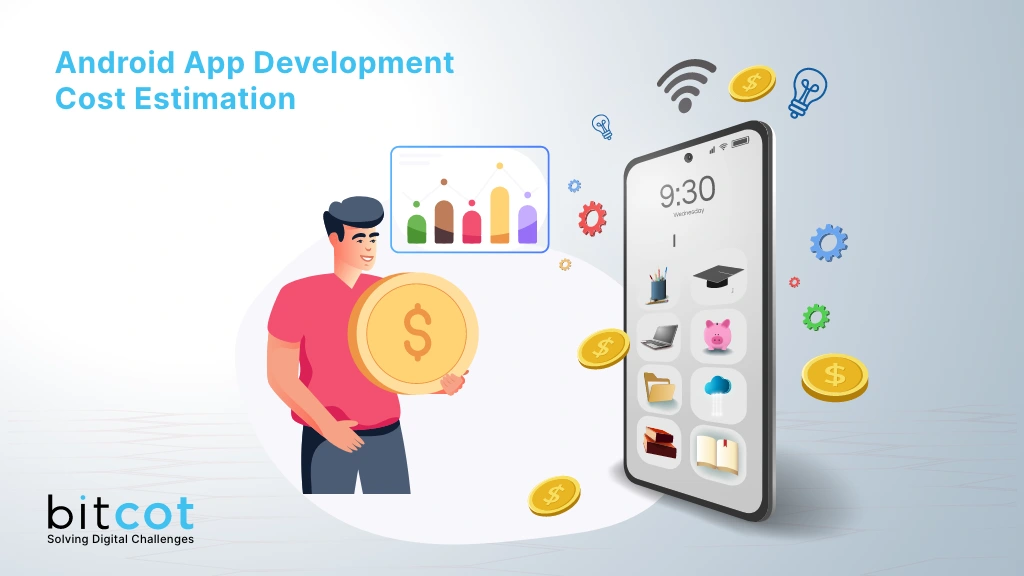
A. Hourly Rate Calculation
One of the primary factors in estimating app development costs is the hourly rate of the developers involved in the project. The average hourly rates for Android app developers can vary significantly based on several factors, including location and experience.
- Average Hourly Rates for Android App Developers
The average hourly rates for Android app developers differ across regions. For instance, developers in North America and Western Europe generally have higher rates compared to those in Eastern Europe, Asia, or South America. On average, rates can range from $50 to $250 per hour.
- Factors Influencing Hourly Rates
Several factors influence the hourly rates of Android app developers. These factors include the developer’s experience level, expertise in specific technologies or frameworks, and the complexity of the project. Highly experienced developers or those with specialized skills may command higher rates due to their expertise.
B. Effort Estimation Techniques
Effort estimation techniques help break down the app development process into manageable tasks and provide insights into the effort required for each task. Here are three commonly used effort estimation techniques for estimating Android app development costs:
- Work Breakdown Structure (WBS)
The Work Breakdown Structure (WBS) technique involves breaking down the project into smaller, more manageable tasks. Each task is then estimated individually in terms of effort, resources, and duration. This technique provides a detailed overview of the project, allowing for more accurate cost estimation.
- Function Point Analysis (FPA)
Function Point Analysis (FPA) is a technique that measures the functionality provided by the application. It assigns a numerical value to each function based on its complexity. By analyzing the number and complexity of functions, FPA helps estimate the effort required for development and provides a basis for cost estimation.
- User Story Estimation
User Story Estimation is commonly used in Agile development methodologies. It involves breaking down the project requirements into user stories, which are small, manageable units of functionality. Each user story is then estimated using techniques like story points or planning poker. The cumulative estimates of all user stories provide an estimate of the overall effort and cost.
C. Cost Examples for Different App Types
To provide a better understanding of Android app development costs, let’s consider some cost examples for different types of apps:
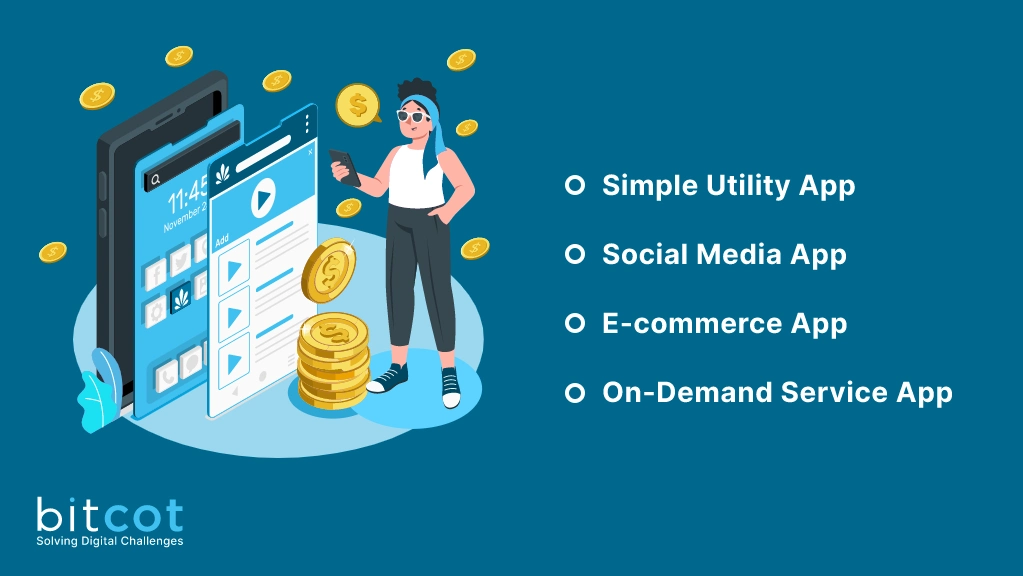
- Simple Utility App
A simple utility app, such as a calculator or a weather app, typically involves basic functionality and minimal design complexity. The development cost for such an app can range from $10,000 to $30,000 depending on factors such as the features required and the developer’s hourly rate.
- Social Media App
A social media app, such as a messaging platform or a photo-sharing app, involves more complex features like user authentication, real-time messaging, and social interactions. The development cost for a social media app can range from $30,000 to $100,000 or more, depending on the app’s scale, complexity, and the desired user experience.
- E-commerce App
An e-commerce app involves features like product catalogs, shopping carts, payment gateways, and order management. The development cost for an e-commerce app can range from $30,000 to $80,000 or more, depending on the number of products, integrations with third-party systems, and customization requirements.
- On-Demand Service App
An on-demand service app, such as a ride-sharing or food delivery app, requires complex functionalities like real-time tracking, payment processing, and user reviews. The development cost for an on-demand service app can range from $30,000 to $100,000 or more, depending on factors such as the app’s complexity, scalability, and integration with external services.
Here is a chart showing the breakdown of Android app development costs based on app category:
| App Category | Example Apps | Development Cost |
| Simple Utility App | Flashlight, To-do List, Calculator | $10,000 – $30,000+ |
| Social Media App | Custom Social Network, Photo Sharing App | $30,000 – $100,000+ |
| E-commerce App | Custom Shopping App, Marketplace App | $30,000 – $80,000+ |
| On-Demand Service App | Custom Ride-Sharing, Food Delivery App | $30,000 – $100,000+ |
Budgeting for Android App Development
Budgeting is a crucial aspect of any Android app development project. Proper budget allocation ensures financial viability, prevents cost overruns, and maximizes the return on investment. This blog will provide a comprehensive guide to budgeting for Android app development, covering various essential considerations and steps.

A. Defining Project Goals and Scope
- Identifying app objectives and target audience
Clearly defining the goals and objectives of your app is the first step in budgeting. Understand the purpose of the app, its target audience, and the problems it aims to solve. This clarity will help you allocate resources effectively.
- Determining essential features and prioritizing
Identify the core features and functionalities your app must have to fulfill its purpose. Prioritize these features based on their importance and potential impact. This step will help you focus your budget on the critical aspects of development.
B. Researching App Development Companies
- Evaluating portfolios and client testimonials
Research and shortlist reputable app development companies or freelancers. Evaluate their portfolios to assess the quality and diversity of their work. Additionally, review client testimonials and case studies to gauge their reliability and expertise.
- Comparing cost estimates and service offerings
Request cost estimates from the shortlisted app development companies. Compare these estimates along with the services they provide, such as UI/UX design, development, testing, and ongoing support. Consider factors like experience, expertise, and reputation when making your decision.
C. Allocating Budget for Different Phases
- Design and prototyping
Allocate a portion of your budget for UI/UX design and prototyping. This phase involves creating wireframes, mockups, and interactive prototypes to visualize the app’s layout and user experience. Investing in a good design is crucial for user engagement and satisfaction.
- Development and testing
The majority of your budget will be allocated to the development and testing phase. This includes coding, integration of features, backend development, and thorough quality assurance testing. Be prepared to allocate sufficient resources to ensure a robust and bug-free app.
- Deployment, marketing, and ongoing maintenance
Set aside a portion of your budget for app deployment to app stores, marketing activities, and ongoing maintenance. Marketing efforts are essential for app visibility and user acquisition. Ongoing maintenance covers bug fixes, updates, and customer support.
D. Contingency Planning and Risk Management
- Accounting for unforeseen challenges and delays
It is essential to anticipate unforeseen challenges and potential delays in the development process. Factors like technical issues, changes in requirements, or unexpected market shifts can impact timelines and budgets. Allocate a contingency fund to mitigate these risks.
- Setting aside reserve funds for contingencies
Reserve a portion of your budget as a buffer for unforeseen expenses. This reserve fund can be used to address unexpected development hurdles, additional feature requests, or any other unforeseen costs that may arise during the project.
Cost-Effective Strategies for Android App Development
Developing an Android app can be a significant investment, but there are strategies that can help you optimize costs while delivering a high-quality product. In this blog, we will explore cost-effective strategies for Android app development that can help you reduce expenses without compromising on functionality or user experience.
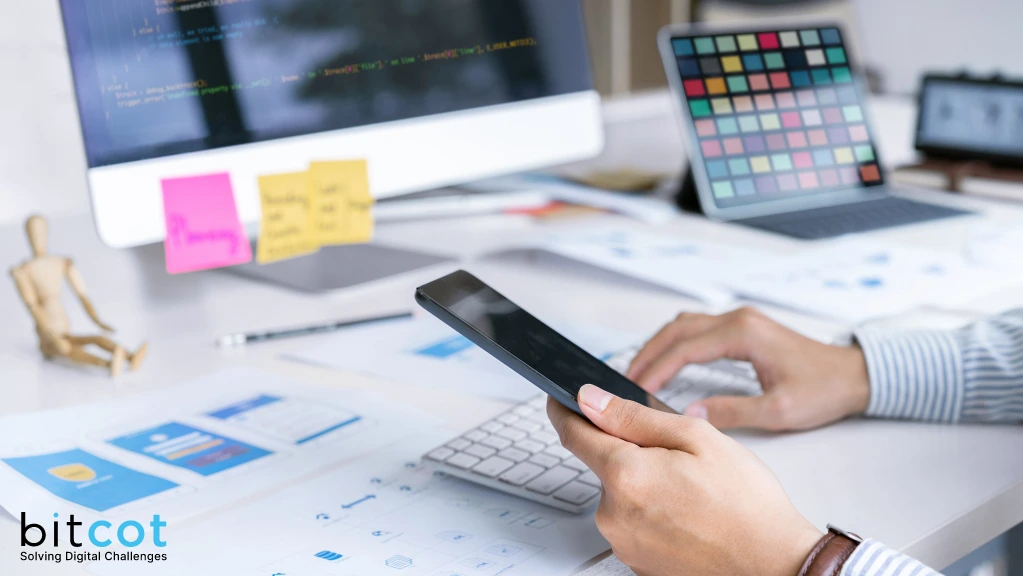
A. Minimum Viable Product (MVP) Approach
- Focusing on essential features for initial release
Adopting the Minimum Viable Product (MVP) approach involves identifying the core features that are essential for the initial release of your app. By prioritizing these features, you can reduce development time and costs, enabling you to launch your app faster and gather user feedback.
- Gathering user feedback for subsequent iterations
Launching an MVP allows you to gather valuable feedback from your users. This feedback can be used to improve and refine your app in subsequent iterations. By incorporating user input, you can prioritize enhancements and new features based on actual user needs, minimizing the risk of investing in unnecessary development efforts.
B. Agile Development Methodology
- Iterative development and continuous improvement
Adopting an Agile development methodology allows for iterative development and continuous improvement. Instead of trying to build the entire app at once, Agile encourages breaking the development process into smaller, manageable sprints. This approach enables you to release working versions of your app more frequently, gather feedback, and make necessary adjustments, resulting in cost savings by reducing rework.
- Enhanced flexibility and adaptability to changing requirements
Agile development provides flexibility and adaptability to changing requirements. As you receive feedback and new insights, you can adjust your development plans accordingly. This flexibility reduces the risk of building unnecessary or outdated features, saving both time and money.
C. Open-Source and Pre-Built Solutions
- Utilizing existing frameworks and libraries
Take advantage of open-source frameworks and libraries that offer pre-built components and functionalities. These resources can significantly reduce development time and cost by providing ready-made solutions for common app features. Examples include libraries for user authentication, database integration, and UI components.
- Customizing pre-built components to reduce development time and cost
Instead of building everything from scratch, consider customizing pre-built components to align with your app’s specific requirements. This approach allows you to leverage existing solutions while tailoring them to fit your unique needs. By reducing development effort, you can save costs while still delivering a customized user experience.
D. Long-Term Planning and Scalability
- Designing for future growth and scalability
Incorporate long-term planning and scalability considerations into your app’s architecture and design. Anticipate future needs and potential expansion, even if they are not immediate requirements. This approach ensures that your app can accommodate future enhancements and scale without requiring significant re-architecting or redevelopment, saving costs in the long run.
- Considering modular architecture and flexibility in development
Adopting a modular architecture approach allows for flexibility in development. By breaking down your app into modular components, you can develop and test them independently. This approach facilitates easier maintenance, updates, and scalability. Additionally, it enables you to allocate resources more efficiently, reducing development time and costs.
Driven to Deliver: How BitCot Accelerates Android App Development Success

With over 2 billion active Android users worldwide, partnering with an experienced Android app development company enables immense audience reach and engagement for businesses. However, Android development requires significant technical competencies to translate ambitious ideas into strategic applications. This is where a partner like BitCot proves invaluable.
Leveraging years of core expertise in Android development, BitCot helps companies quickly turn app visions into reality. Their Agile approach accelerates iterative build cycles while rigorous QA practices ensure seamless user experiences. BitCot optimizes performance, security, and scale architecture from the initial design phase. Our developers masterfully leverage Android’s capabilities to create beautiful, functional UIs tailored to project goals.
Ongoing support provides a cost-effective pathway to add capabilities as needs change. Whether building for smartphones, emerging technologies like wearables and TV, or integrating advanced components like AI and predictive analytics, BitCot unlocks Android’s full potential as a leading Android application development company. Our customer-focused process guides projects from concept to launch, overcoming obstacles and capitalizing on opportunities.
With excellence across the entire app development lifecycle, BitCot delivers future-ready Android solutions that meet strategic objectives while delighting end users. Our technical competency and execution accelerate innovation on one of the world’s most ubiquitous mobile platforms.


